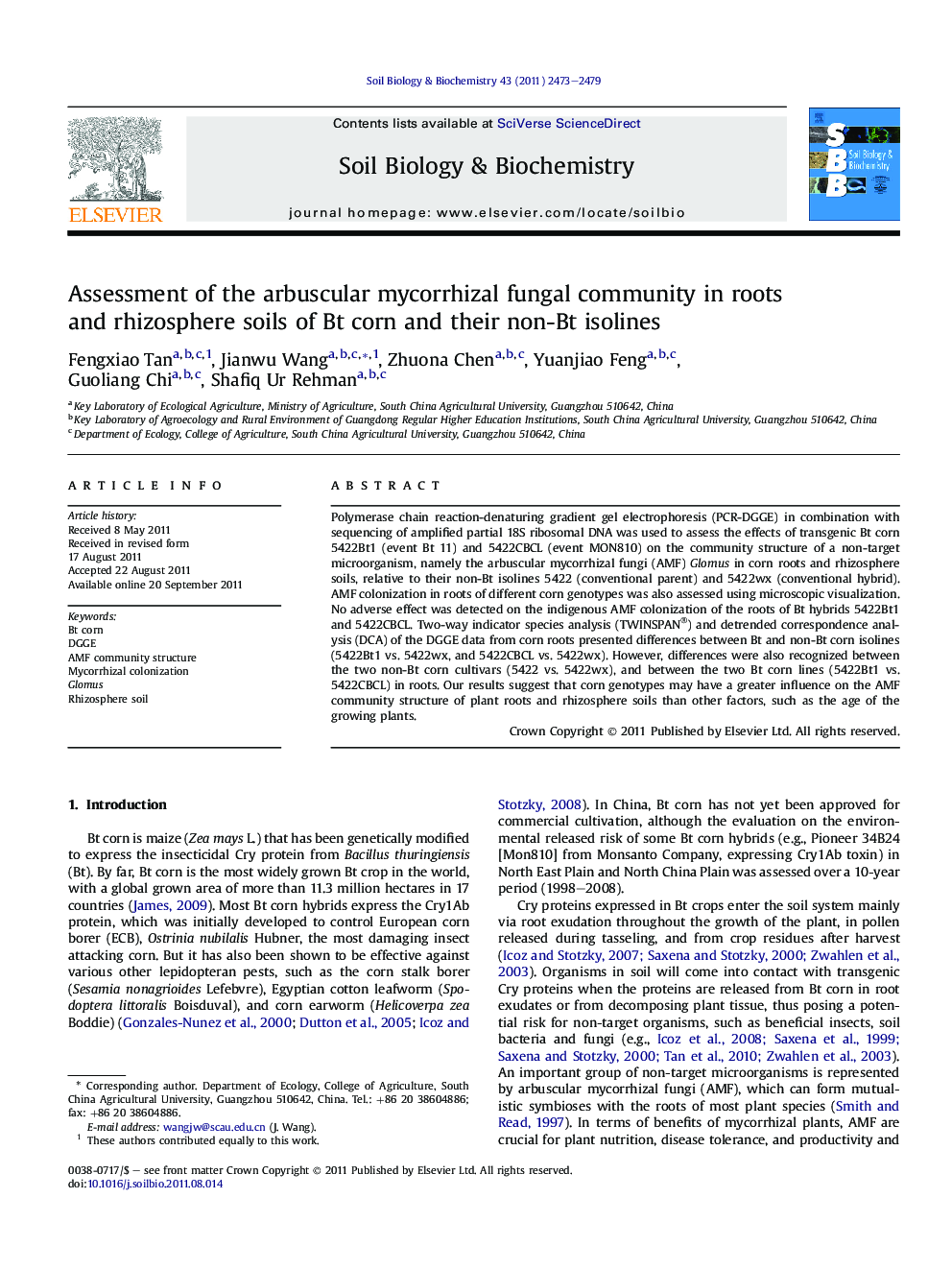| Article ID | Journal | Published Year | Pages | File Type |
|---|---|---|---|---|
| 2025173 | Soil Biology and Biochemistry | 2011 | 7 Pages |
Polymerase chain reaction-denaturing gradient gel electrophoresis (PCR-DGGE) in combination with sequencing of amplified partial 18S ribosomal DNA was used to assess the effects of transgenic Bt corn 5422Bt1 (event Bt 11) and 5422CBCL (event MON810) on the community structure of a non-target microorganism, namely the arbuscular mycorrhizal fungi (AMF) Glomus in corn roots and rhizosphere soils, relative to their non-Bt isolines 5422 (conventional parent) and 5422wx (conventional hybrid). AMF colonization in roots of different corn genotypes was also assessed using microscopic visualization. No adverse effect was detected on the indigenous AMF colonization of the roots of Bt hybrids 5422Bt1 and 5422CBCL. Two-way indicator species analysis (TWINSPAN®) and detrended correspondence analysis (DCA) of the DGGE data from corn roots presented differences between Bt and non-Bt corn isolines (5422Bt1 vs. 5422wx, and 5422CBCL vs. 5422wx). However, differences were also recognized between the two non-Bt corn cultivars (5422 vs. 5422wx), and between the two Bt corn lines (5422Bt1 vs. 5422CBCL) in roots. Our results suggest that corn genotypes may have a greater influence on the AMF community structure of plant roots and rhizosphere soils than other factors, such as the age of the growing plants.
► Bt corn had no adverse effect on indigenous AMF colonization. ► Glomus communities in both plant roots and rhizosphere soils were associated with corn genotypes. ► Corn genotypes have greater influences on AMF community than the age of the growing plants.
